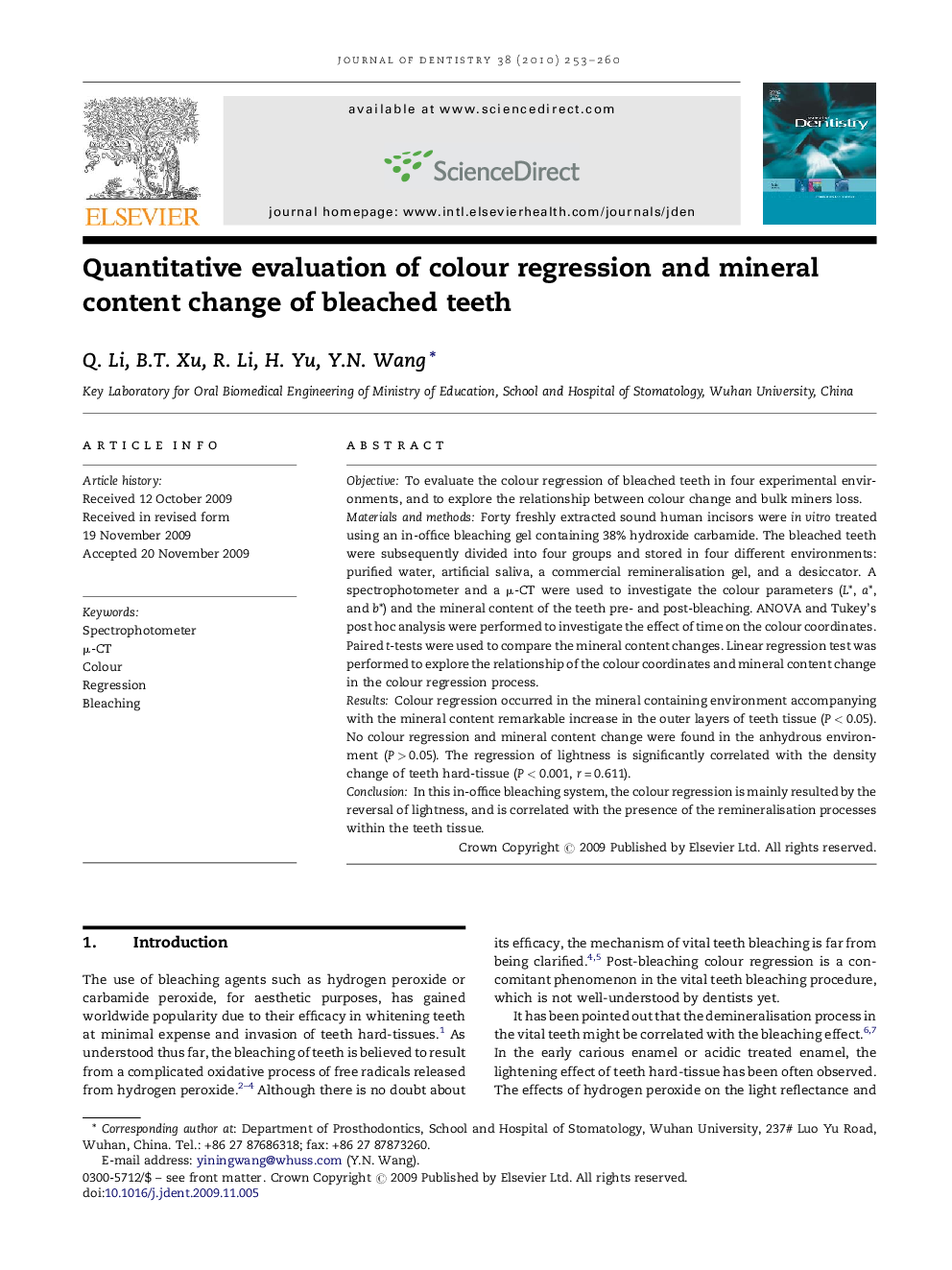| Article ID | Journal | Published Year | Pages | File Type |
|---|---|---|---|---|
| 3145431 | Journal of Dentistry | 2010 | 8 Pages |
ObjectiveTo evaluate the colour regression of bleached teeth in four experimental environments, and to explore the relationship between colour change and bulk miners loss.Materials and methodsForty freshly extracted sound human incisors were in vitro treated using an in-office bleaching gel containing 38% hydroxide carbamide. The bleached teeth were subsequently divided into four groups and stored in four different environments: purified water, artificial saliva, a commercial remineralisation gel, and a desiccator. A spectrophotometer and a μ-CT were used to investigate the colour parameters (L*, a*, and b*) and the mineral content of the teeth pre- and post-bleaching. ANOVA and Tukey's post hoc analysis were performed to investigate the effect of time on the colour coordinates. Paired t-tests were used to compare the mineral content changes. Linear regression test was performed to explore the relationship of the colour coordinates and mineral content change in the colour regression process.ResultsColour regression occurred in the mineral containing environment accompanying with the mineral content remarkable increase in the outer layers of teeth tissue (P < 0.05). No colour regression and mineral content change were found in the anhydrous environment (P > 0.05). The regression of lightness is significantly correlated with the density change of teeth hard-tissue (P < 0.001, r = 0.611).ConclusionIn this in-office bleaching system, the colour regression is mainly resulted by the reversal of lightness, and is correlated with the presence of the remineralisation processes within the teeth tissue.
